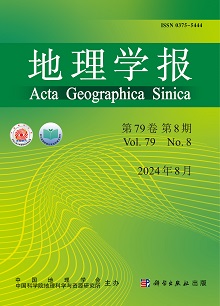Quality Assessment and Identification of Key Areas for Ecological Conservation Projects in Inner Mongolia
Li, Tianqi , Chen, Panyu , Lin, Jiayi , Wu, Quanlong , Zhang, Hailin , Zhan, Jinyan
2025-02-20 null null 14(卷), null(期), (null页)
In the context of global climate change, implementing ecological projects in China is critical for improving ecosystem quality, conservation, and sustainable development. Despite progress, ecological engineering areas remain vulnerable to degradation. Assessing these areas and identifying key regions for ecological improvement is essential for guiding project construction and fostering sustainable development. This study analyzed the spatial differentiation of ecological health and greenness in the Inner Mongolia Autonomous Region, a key area of the Three-North Shelterbelt Forest Project (TNSFP). A dual assessment framework integrating health and greenness indicators was developed to comprehensively evaluate the ecological benefits of engineering projects and identify priority areas for management. The results indicate the following: (1) Among the 104 counties and districts in Inner Mongolia, areas with high Ecological Health Index (EHI) values are primarily located in forests and grasslands, while low EHI values are found in agricultural-pastoral transition zones, deserts, the Gobi, and urban areas in western Inner Mongolia; (2) The Ecological Greenness Index (EGI) exhibits medium to low values across most of Inner Mongolia, except for the Daxinganling woodland area. Low EGI values are predominantly found in desert and desert grassland areas in the west, as well as grassland areas in central Inner Mongolia; (3) The Ecological Quality Index (EQI) at the raster scale shows a general decline from northeast to southwest, with high values concentrated in woodland areas and medium to low values in deserts, agricultural-pastoral zones, and urban areas; and (4) Key areas for ecological quality are mainly located in the deserts and Gobi regions of western Inner Mongolia, as well as urban areas, accounting for approximately 23.65% of the study area. These findings provide valuable insights for the planning and sustainable management of the TNSFP and offer significant support for ecological decision-making.
相关推荐
- How do household crop and livestock production adapt to extreme climatic events? -Insights from a typical agro-pastoral ecotone on the Qinghai-Tibet Plateau [2025-02-20]
- Spatiotemporal evolution characteristics of soil erosion and its driving mechanisms - a case Study: Loess Plateau, China [2025-02-20]
- Effects of climate and afforestation on carbon sequestration change in northern China [2025-02-20]
- Identifying prioritized afforestation types in ecologically vulnerable zones of Northern China considering reducing water consumption and increasing carbon sequestration [2025-02-20]
- Wind erosion reduction by water diversion in the lower Heihe River Basin, Northwest China [2025-02-20]



